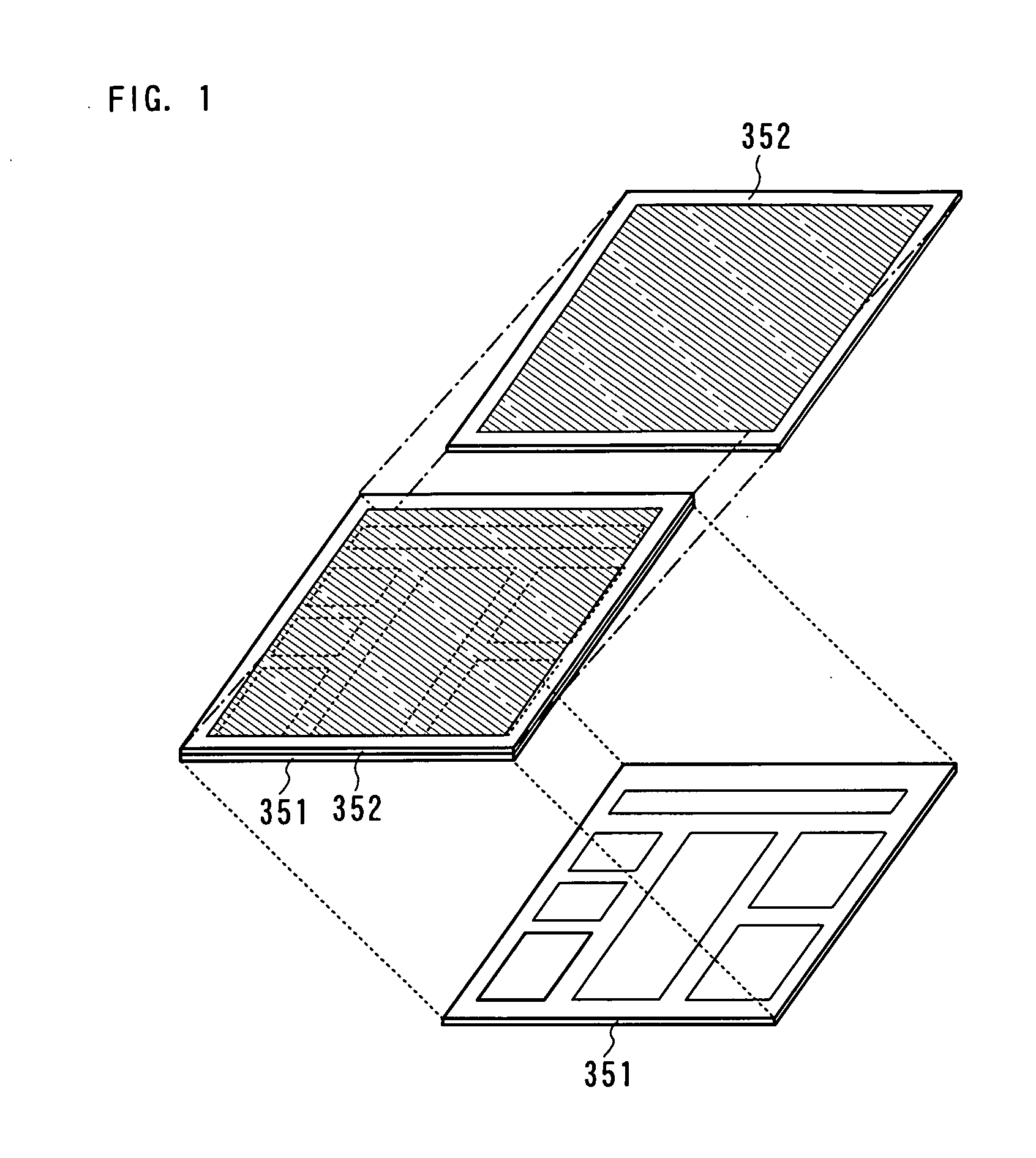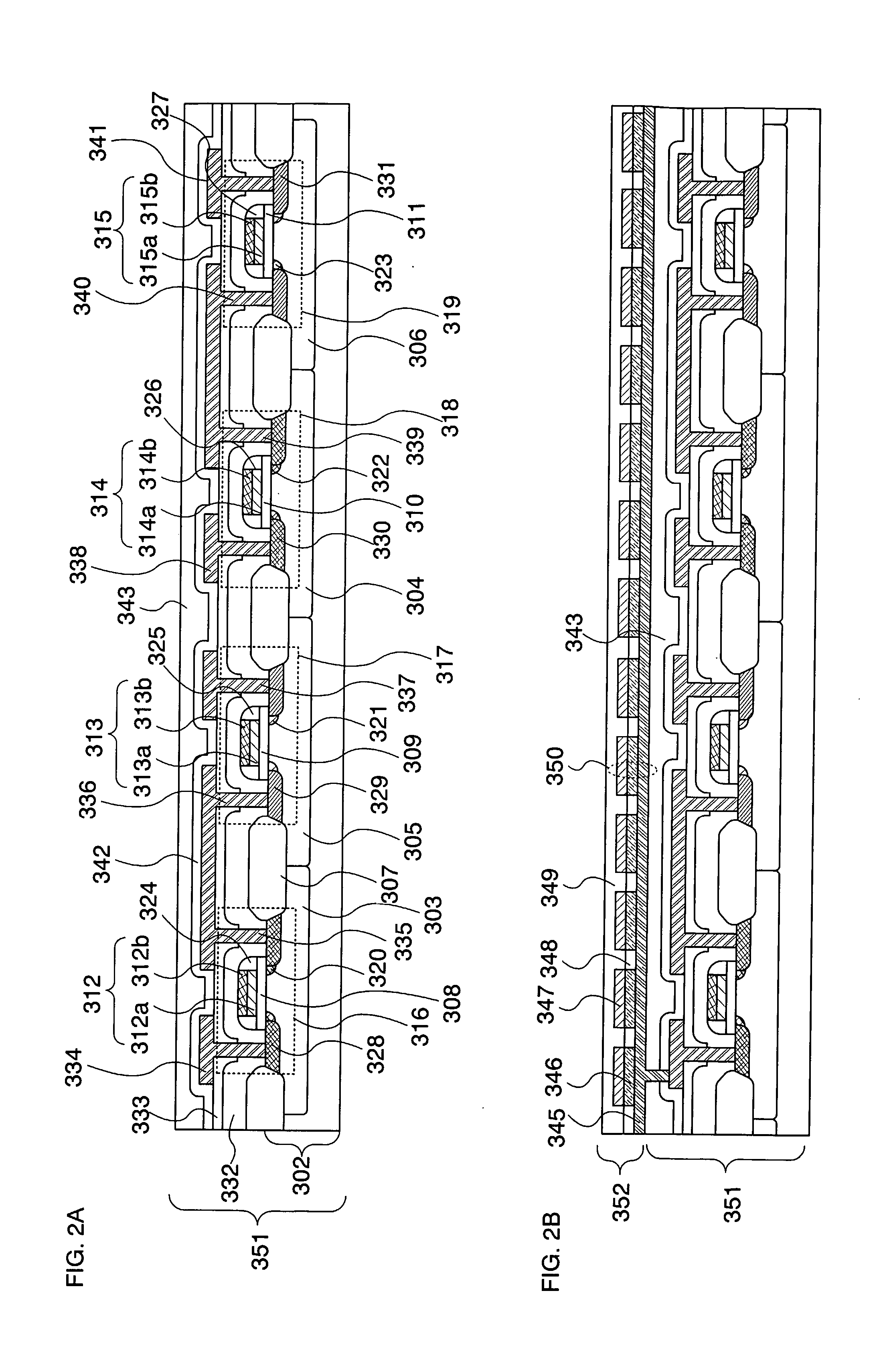Semiconductor Device
- Summary
- Abstract
- Description
- Claims
- Application Information
AI Technical Summary
Benefits of technology
Problems solved by technology
Method used
Image
Examples
embodiment mode 1
[0045] In this embodiment mode, one example of the structure of a semiconductor device according to the present invention is explained with reference to FIGS. 1 to 3.
[0046] A semiconductor device according to the invention has a structure in which a plurality of circuits is integrated, which includes a layer 351 including a plurality of field effect transistors (FETs) and a layer 352 including a plurality of memory elements are sequentially stacked (FIG. 1). Various circuits are configured by the layer 351 including a plurality of field effect transistors, and the layer 352 including the plurality of memory elements has a memory circuit for storing data.
[0047] Next, the cross-sectional structure of a semiconductor device having the above structure is explained. First, the cross-sectional structure of the layer 351 including a plurality of field effect transistors is explained (FIG. 2A).
[0048] A field effect transistor is formed over a single crystal semiconductor substrate 302. N...
embodiment mode 2
[0081] In this embodiment mode, the structure of a memory element shown in Embodiment Mode 1 is explained hereinafter.
[0082] The present invention has a feature that the memory element (hereinafter, also referred to as an organic memory element) shown in the above embodiment mode includes an organic compound layer. A memory may include only an organic memory element or may include other memory element. A memory including an organic memory element (hereinafter, also referred to as an organic memory) utilizes the material of an organic compound and makes electric resistance change by optical action or by electric action to the organic compound layer.
[0083] The structure of the organic memory is explained with reference to FIG. 13. The organic memory includes a memory cell array 22 provided with a plurality of memory cells 21 in a matrix, decoders 23 and 24, a selector 25, and a reading / writing circuit 26. The structure of the organic memory shown in FIG. 13 corresponds to the struct...
embodiment mode 3
[0113] As described above, a memory is an indispensable component of a semiconductor device according to the present invention. In this embodiment mode, a memory which has different structure from that of the above Embodiment Mode 2 is explained with reference to FIGS. 11A to 11C.
[0114] A memory 216 includes a memory cell array 222 provided with memory cells 221 in a matrix, decoders 223 and 224, a selector 225, and a reading / writing circuit 226 in FIG. 11A. The structure of the memory 216 here is one example, and other circuits such as a sense amplifier, an output circuit, a buffer, and the like may be included.
[0115] The memory cell 221 includes a first wiring connected to a bit line Bx (1≦x≦m), a second wiring connected to a word line Wy (1≦y≦n), a transistor 240, and a memory element 241. The memory element 241 has a structure in which an organic compound layer is interposed between a pair of conductive layers. A gate electrode of the transistor is connected to the word line, ...
PUM
 Login to View More
Login to View More Abstract
Description
Claims
Application Information
 Login to View More
Login to View More - R&D
- Intellectual Property
- Life Sciences
- Materials
- Tech Scout
- Unparalleled Data Quality
- Higher Quality Content
- 60% Fewer Hallucinations
Browse by: Latest US Patents, China's latest patents, Technical Efficacy Thesaurus, Application Domain, Technology Topic, Popular Technical Reports.
© 2025 PatSnap. All rights reserved.Legal|Privacy policy|Modern Slavery Act Transparency Statement|Sitemap|About US| Contact US: help@patsnap.com



